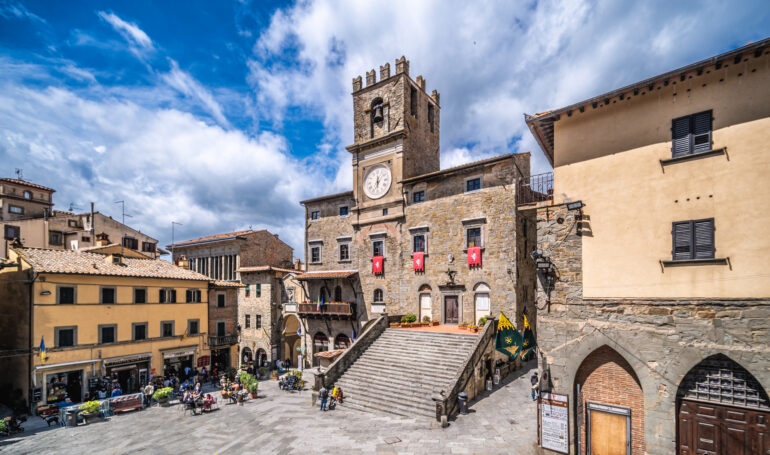
Cortona – Tuscany’s not so Hidden Gem
I recently had the pleasure of spending several days in the lovely Tuscan town of Cortona. While I had been there before, only for a short afternoon visit, this two-day stay really had me falling in love with this town.
Cortona, a small town in Tuscany, is a gem that embodies the rich history, culture, and scenic beauty. Cortona is one of Tuscany’s oldest towns, located on a hilltop overlooking the Val di Chiana and Lake Trasimeno. Its enchanting charm, architectural wonders, and artistic heritage have attracted visitors for centuries. This post delves into the town’s fascinating history, cultural landmarks, local traditions, and rise to fame as a tourist destination.
Historical Overview
Cortona’s origins can be traced back to the Etruscans, an ancient civilization that predated the Romans in central Italy. It is believed to have been founded around the 8th century BC. This makes it one of the oldest continuously inhabited towns in the region. During the Etruscan period, Cortona was a major center due to its strategic location on a hill, providing defensive advantages and views over the fertile valley below.
In the 4th century BC, the town was fortified with massive stone walls, which still partially stand today. This serves as a reminder of Cortona’s ancient past. After the fall of the Etruscans, Cortona came under Roman rule. And while it lost some of its prominence, it remained a vital town due to its position along important trade routes.
During the Middle Ages, Cortona saw a resurgence of power as it became a thriving medieval commune. The 13th century marked a period of expansion and construction, including the erection of churches and public buildings. These buildings still define the town’s skyline today. The Republic of Florence eventually gained control over Cortona in the 15th century, further influencing its architecture and culture.
Artistic and Cultural Heritage
Cortona’s rich artistic heritage is evident in its stunning churches, museums, and public spaces. One of the town’s most important religious sites is the Basilica of Santa Margherita, dedicated to the town’s patron saint, Saint Margaret of Cortona. Perched high on the hill above the town, the basilica offers panoramic views of the surrounding countryside. Inside, visitors can see the remains of the saint, who was known for her devotion to the poor and miraculous works.
Another must-visit religious site is the Church of San Francesco, a simple yet elegant Gothic structure dating back to the 13th century. The church contains important relics, including a piece of the Holy Cross, and serves as a testament to Cortona’s medieval religious fervor.
For art lovers, the Museo Diocesano is a treasure trove of Renaissance masterpieces, with works by renowned artists such as Fra Angelico and Luca Signorelli. Signorelli, a native of Cortona, left an indelible mark on the town with his masterful frescoes and paintings. His influence is felt throughout the town, and his works are considered some of the finest examples of Renaissance art.
The Museo dell’Accademia Etrusca, located in the imposing Palazzo Casali, offers visitors a glimpse into Cortona’s ancient past. The museum houses an impressive collection of Etruscan artifacts, including bronze statues, urns, and pottery. One of its most prized possessions is the Etruscan Chandelier, a beautifully crafted bronze candelabrum from 5th century BC. This museum is a must-visit for anyone interested in learning about the town’s deep connection to its Etruscan roots.
Le Celle of Cortona
Le Celle is a historic Franciscan hermitage near Cortona. It is one of the earliest monasteries established by Saint Francis of Assisi, who is said to have stayed here around 1211. It is said that St. Francis spent significant time here, meditating and living a simple, ascetic life. St. Francis used Le Celle as a retreat and for prayer, and it became an important location for his followers. Even after his death, the Franciscan order maintained the site. Nestled in the hills above Cortona, the hermitage is known for its serene atmosphere, beautiful natural surroundings, and spiritual significance.
Le Celle consists of a small cluster of stone buildings, including the cells where monks live in simplicity and solitude. The architecture harmonizes with the rocky landscape, and the monastery has retained much of its original medieval character. Visitors can explore the humble rooms where Saint Francis is believed to have stayed and the peaceful chapel that still serves as a place of prayer.
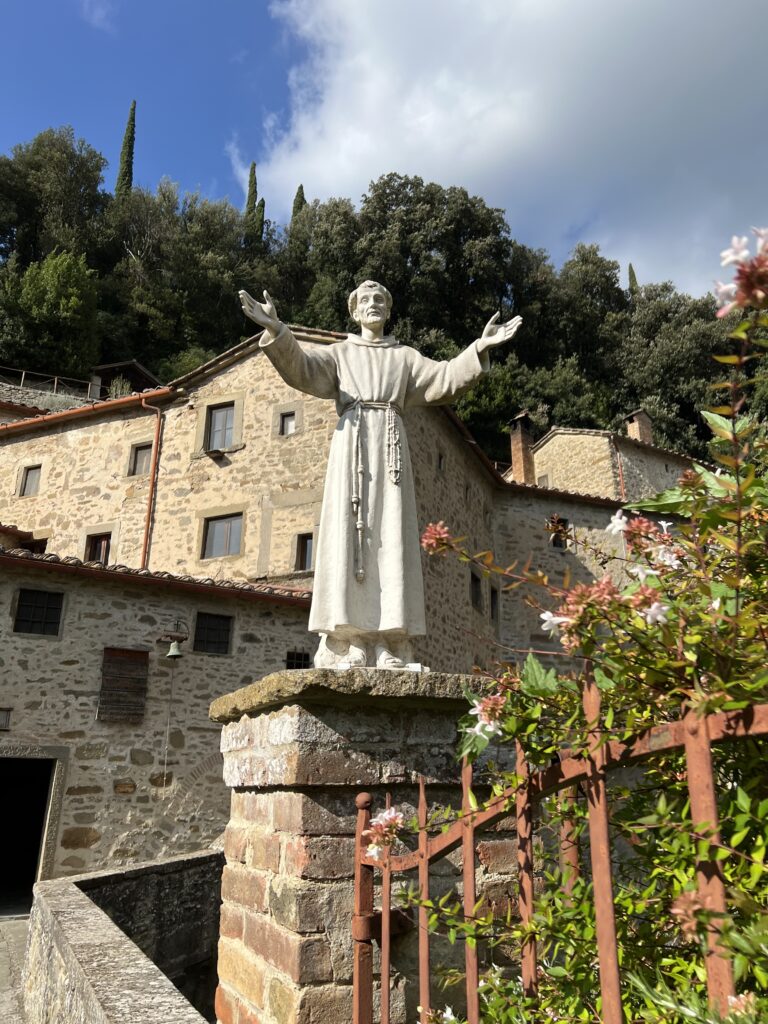
One of the most critical spots within Le Celle is the cell of St. Francis, a small, simple room where the saint is believed to have slept and prayed. It remains a powerful symbol of his humility and devotion. Le Celle of Cortona is a hidden gem for those interested in religious history, Franciscan spirituality, or simply seeking a peaceful retreat in nature.
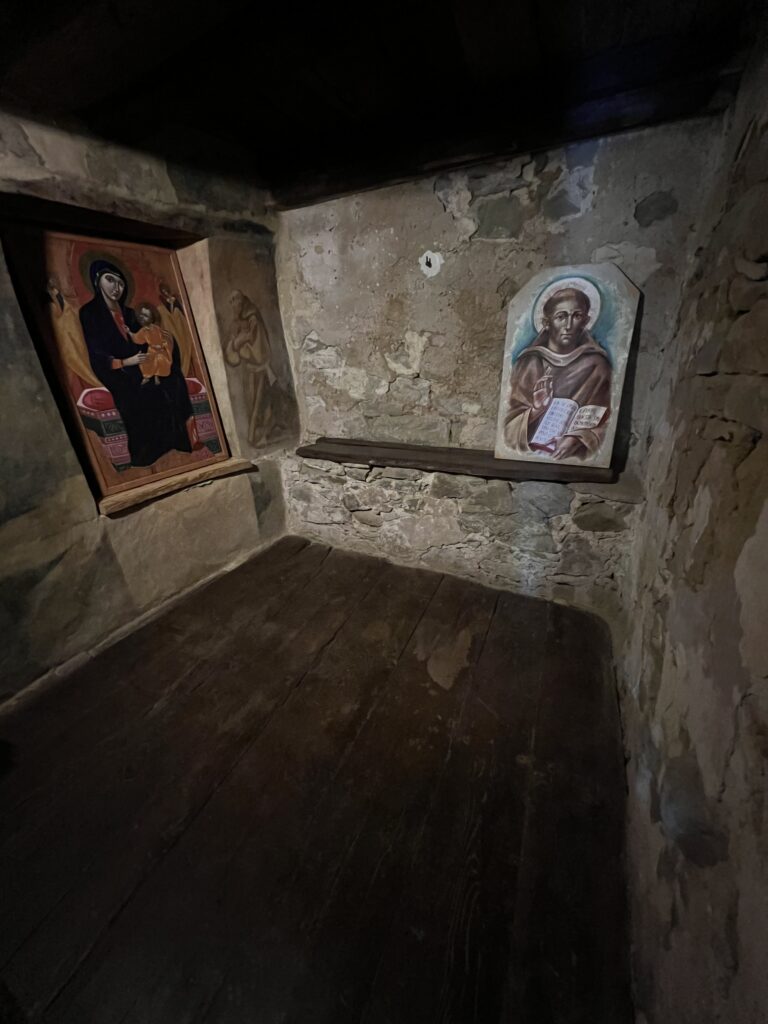
Architectural Highlights
Cortona’s medieval architecture is one of its defining characteristics, with winding cobblestone streets, stone houses, and steep alleyways that give the town its timeless appeal. The town’s historic center is dominated by Piazza della Repubblica, where the impressive Palazzo Comunale (Town Hall) stands. The building, with its grand clock tower and elegant façade, dates back to the 13th century and serves as a focal point for civic life.
Just a short walk away is the Piazza Signorelli, another picturesque square surrounded by historic buildings, includingthe Teatro Signorelli, a beautiful 19th-century theater that still hosts performances and cultural events today. The piazza is a lively hub, especially in the summer when locals and tourists gather in the outdoor cafes to enjoy the warm Tuscan sun.
Cortona’s defensive walls, many of which date back to Etruscan times, are another striking feature of the town. Visitors can walk along portions of the ancient walls, offering breathtaking views of the surrounding countryside, including the expansive Val di Chiana and the shimmering waters of Lake Trasimeno.
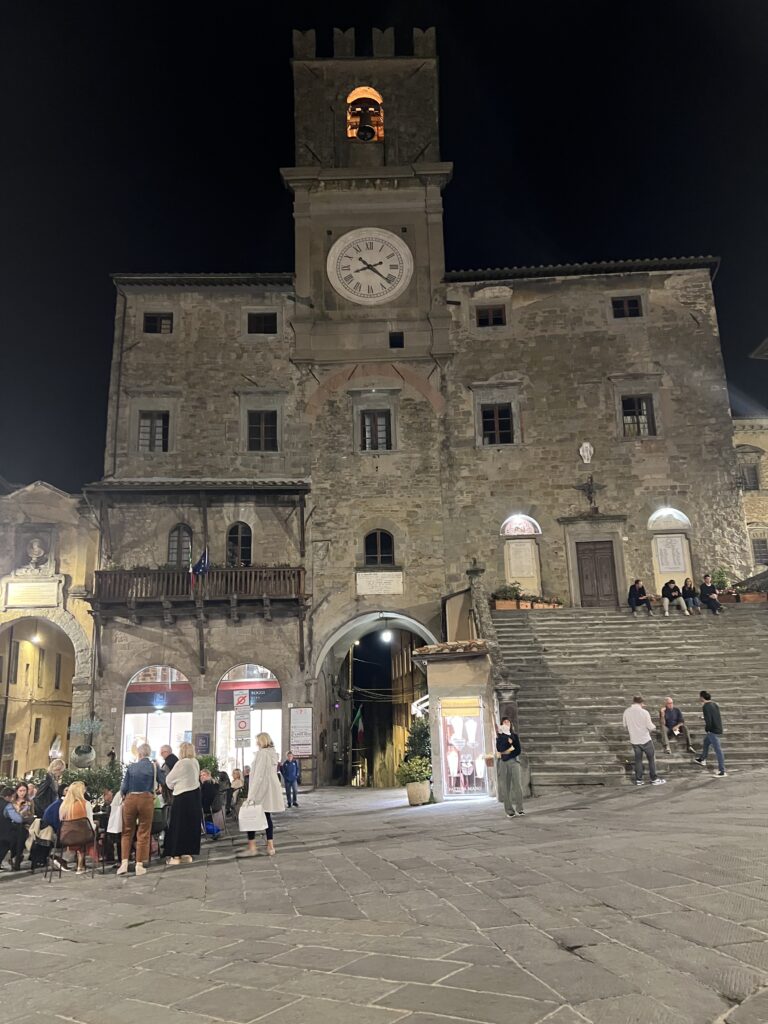
Festivals and Traditions
Cortona is a town that celebrates its traditions, and its annual festivals reflect its rich culture. One of the most important events is the Sagra della Bistecca. A festival dedicated to the famous Chianina steak sourced from cattle raised in the Val di Chiana. This food festival, held in August, brings locals and visitors together to enjoy grilled steaks, local wines, and traditional music.
Another significant event is the Giostra dell’Archidado, a medieval reenactment held in June. This colorful tournament, complete with knights in full armor and flag throwers, transports the town back to its medieval past. The event celebrates Cortona’s history and attracts visitors across Italy and beyond.
In addition to these annual events, Cortona is home to several cultural festivals. One of the most important one is the Cortona Mix Festival, which features music, literature, and cinema. This summer festival showcases performances by international artists and serves as a platform for creative expression.
Cortona in Popular Culture
Cortona’s charm and beauty have not gone unnoticed by the world of popular culture. The town gained international fame as the setting for Frances Mayes’s bestselling memoir Under the Tuscan Sun. The book was later adapted into a popular film. The book and film portray the idyllic lifestyle of Tuscany, with Cortona serving as the quintessential small-town life in the region.
Since the release of the book and movie, Cortona has become a popular destination for tourists. The town’s narrow streets, rustic houses, and stunning vistas provide the perfect backdrop for those looking to immerse themselves in the relaxed pace of life that Tuscany offers.
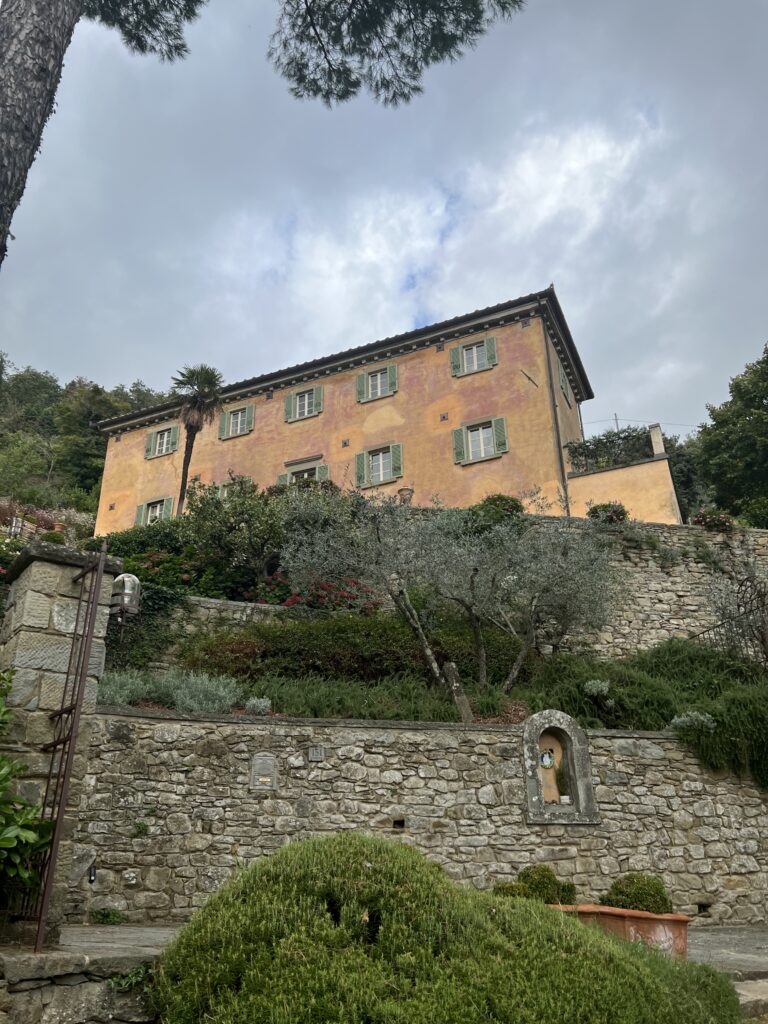
Picture Credit: Lazy Italian Culinary Adventures.
Modern-Day Cortona
While Cortona is steeped in history, it has embraced modernity subtly. The town is home to a vibrant community of artists, writers, and expats. All drawn to its beauty and tranquility. Many old farmhouses and villas have been restored and turned into charming bed and breakfasts and boutique hotels. They offer visitors the chance to experience the Tuscan lifestyle firsthand.
Cortona’s culinary scene is also a major draw for visitors. It boasts numerous restaurants serving traditional Tuscan dishes made from local ingredients. The town’s location near the Val di Chiana means that fresh produce, meats, and wines are always abundant. Trattorias offer dishes such as pici pasta, ribollita (a hearty vegetable and bread soup), and tagliata di Chianina steak.
Conclusion
Cortona, with its deep historical roots, artistic treasures, and breathtaking landscapes, offers visitors a unique glimpse into the heart of Tuscany. Whether exploring its ancient streets, marveling at Renaissance art, or simply enjoying a glass of wine in a sun-drenched piazza, Cortona is where history and beauty converge. Its enduring charm and tranquil atmosphere make it a must-visit destination for anyone traveling through Italy. Whether you’re a history buff, an art lover, or someone searching for scenic beauty, Cortona has something to offer everyone.
Leave a Reply

What to Pack for Italy
Cosa Mettere in Valigia per l'Italia
Everyone is always asking me what they should pack for Italy,
so I’ve created a quick reference guide that you can use for your next trip.
Hint: You don’t need nearly as much as you think you do!

3 Comments
I always like the history of Italy as I:’ve been there twice amd admired al the art and landscape.
Thank you for the incredible description and history of beautiful Cortona! It sounds wonderful and a place definitely worth visiting. Thank you for sharing. Your love of sweet Italy always comes through! Can’t wait to be there again. Enjoy!
I have been to Cortona many times and can never get enough of it. I love it there!!!